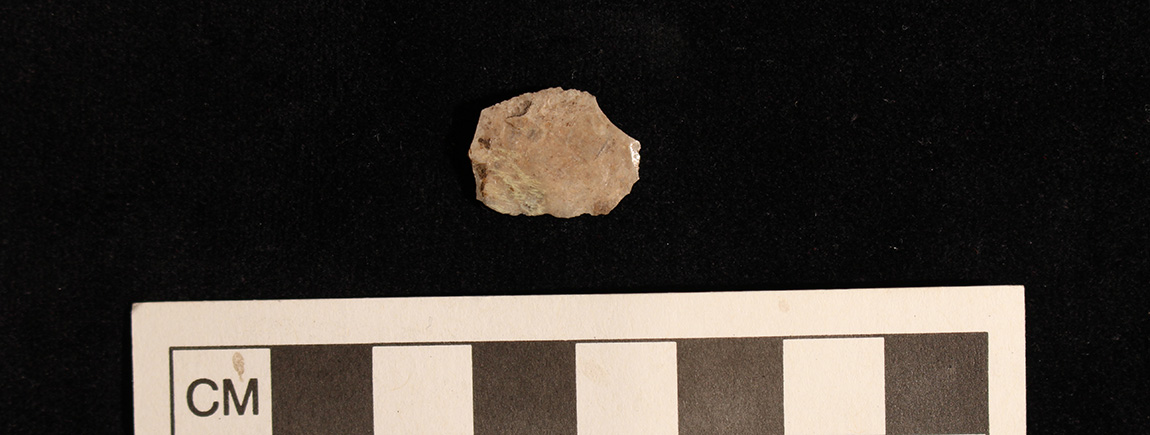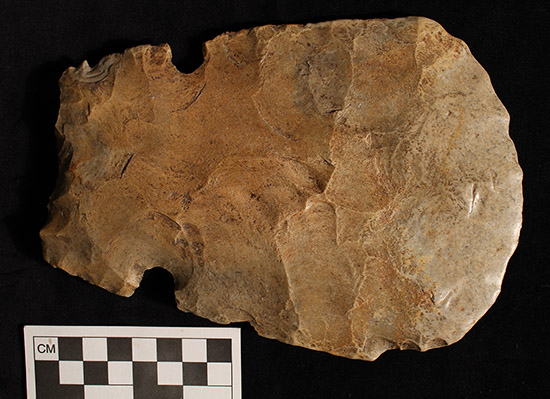
by Michelle M Rathgaber
Artifact of the Month – January 2021
This month’s Artifact of the Month is a Mill Creek chert hoe flake excavated in 2015 at Richard’s Bridge (3CT11/22), a village site in Crittenden County in northeastern Arkansas that dates to around AD 1350–1650. This one small flake gives archeologists a ton of information about the people who lived at the Richard’s Bridge site, what they were doing, and who they may have been in contact with.
We know that Mississippian people were expansive farmers who were growing large crops of corn, beans, and squash as well as other crops from the Eastern Agricultural Complex that they and their ancestors had domesticated (Mueller, et al. 2017). Archeologists find direct evidence of these crops through analysis of botanical remains found at archeological sites. We know that hundreds of people could have lived in each individual town around the region and there is evidence of many towns of various sizes throughout the area during the Mississippi period. To do the level of farming and crop production needed to feed that many people, the Mississippians made tools to help with the agricultural labor. One farming/gardening tool that we find evidence of in Arkansas is a hoe.
Mississippian people in northeast Arkansas typically made hoes by knapping (flaking or chipping) an imported stone called Mill Creek chert. Mill Creek chert outcrops in southern Illinois in Union and Alexander counties. It is found as “large and small lenticular nodules or slabs” (Ray 2007:246), which make it the right size and shape to form a hoe blade. It is quite strong and unlikely to shatter (as long as it is not heat treated) while still being reasonably easy to knap (Ray 2007). After shaping it can be attached to a handle and a hoe is made.

